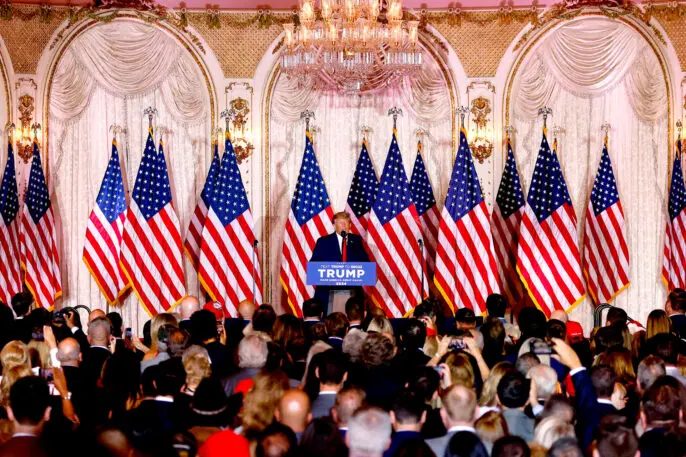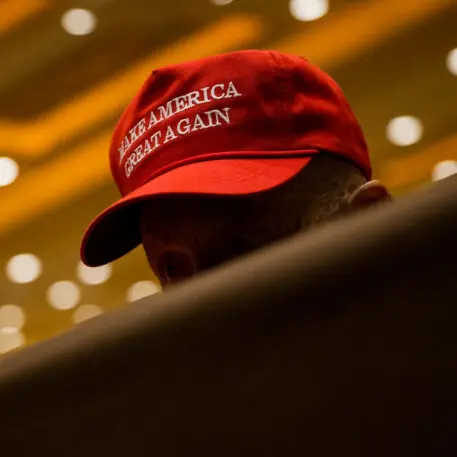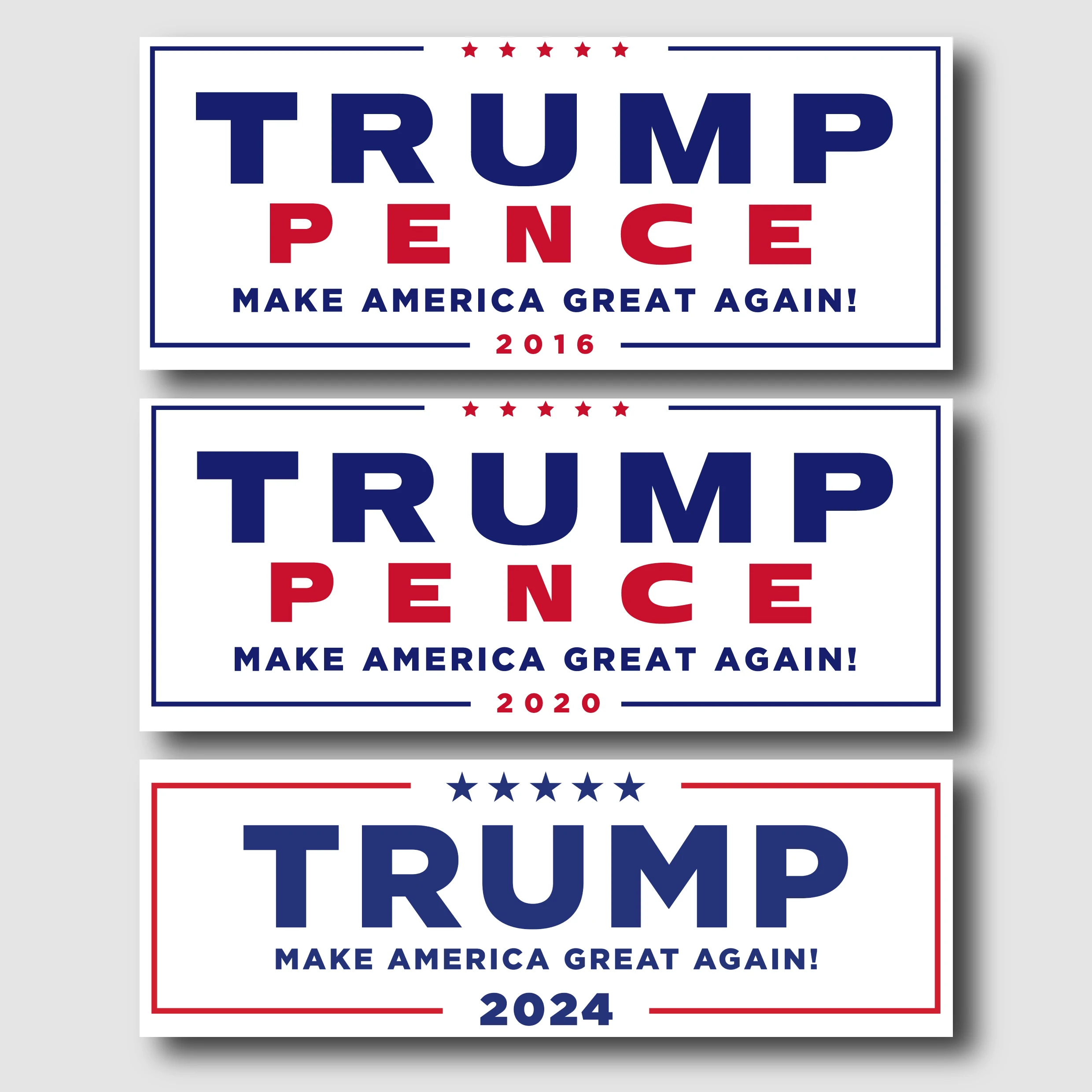Make America Great Again, again?
Former President Donald Trump once rewrote the rule book for how to effectively market a presidential campaign, but with his third consecutive run, he’s testing the limits of an aging, embattled political brand. Trump announced his 2024 campaign earlier this month in a Mar-a-Lago ballroom, a downsized event compared to the packed arena of his 2020 campaign announcement, and less memorable than his golden escalator ride at Trump Tower in the 2016 cycle. Yet, it had all the hallmarks of a Trump branded event: the row of American flags in the background, the outlandish rhetoric, the bold, sans-serif TRUMP logo, and his signature “Make America Great Again” slogan plastered across the podium.

Historically, political parties have attempted to rebuild after losing an election by getting behind a different candidate who can assemble a broader coalition. Oftentimes that comes with new visual signifiers to convey that things are moving in a different direction. Gerald Ford used a minimalist sans-serif logo during his losing 1976 campaign, and four years later, Republicans reclaimed the White House with Ronald Reagan, whose campaign branding used serifs. Barack Obama popularized the single-letter logo, but after Hillary Clinton’s 2016 loss (and her divisive H logo), Democrats ditched the style. Yet, Trump is steadfastly holding to his original branding, despite his previous loss. So what’s a party to do if it’s saddled with a toxic, losing brand like Trump?

It helps to have some context. In 2016, Trump’s visual identity was anti-corporate and anti-establishment, featuring inconsistent fonts on rally signage and mismatched lettering on the first generation of MAGA hats. While Clinton’s campaign used a comprehensive branding system by Pentagram, Trump’s didn’t strictly adhere to a style guide. He ran as an outsider, and it worked. But that outsider brand didn’t translate as well in 2020, four years into his presidency.
It’s unprecedented in modern presidential-campaign branding to see a losing visual identity brought back for an election more than seven years later, but Trump’s sticking with what voters know. Trump’s 2024 logo is updated slightly, with his name taller in Gotham, a typeface previously used by Obama, rather than the stout, more compact Akzidenz-Grotesk Bold Extended used in previous versions. The stars are bigger, and most noticeably, former Vice President Mike Pence’s last name is gone. “Make America Great Again” remains (Trump briefly attempted to use “Keep America Great,” or KAG, in 2020, but dropped it after COVID-19). The latest edition of the MAGA hat sells for $38, includes the number 47 stitched on the side, and only comes in red.

These are insignificant updates in a political universe where branding is less concerned with the quality of the aesthetics than with what kind of community those aesthetics can build. In the case of MAGA, Trump simply can’t afford to part ways with his original slogan, as toxic as it may be, because MAGA has taken on a life of its own. In many ways, MAGA has grown to become a party-within-a-party. “Make America Great Again” has gone from a slogan to an acronym that stands on its own—and Trump’s “America First” message, along with the visual language surrounding it, remain a powerful force in the GOP.
Trump has become a barometer for a new Republican party; candidates are now defined by their distance to him on a scale that goes from “Never Trumpers” to “Ultra MAGA,” a President Biden-coined phrase that Trump and his acolytes adopted as a badge of honor. The number of candidates who use logos inspired by Trump’s have been on the rise since 2018, and some went so far this year as to include “Trump-endorsed” in their branding, says Eric Wilson, a Republican digital strategist and managing partner of Startup Caucus, a Republican startup incubator. “It’s sort of not sufficient for some candidates to state their party affiliation—they have to go further and say either ‘Trump endorsed’ or ‘conservative Republican’ to really drive the case to their supporters.”

Typically, losing an election is the quickest way to see political design trends evolve, but the majority of Republicans still believe Trump only lost in 2020 due to voter fraud. No wonder Trump didn’t feel compelled to rebrand—to most Republicans, Trump was the winner with a winning brand.
Early polling shows Trump remains his party’s top 2024 contender. And therein lies Republicans’ challenge with Trump’s 2024 candidacy: His brand is beloved in the primaries, but toxic in the general. It’s something Trump-endorsed candidates learned in the midterm elections, and why the consistent message from other GOP hopefuls so far has been electability.
Wilson, however, says Republican voters have questions. “It’s too early to say where the Trump brand is,” he says. “The thing that we are seeing with the grassroots Republicans is they still really like President Trump but they have questions about if he’s the right person to be our standard bearer in 2024.”
Recognize your brand’s excellence by applying to this year’s Brands That Matter Awards before the early-rate deadline, May 3.
